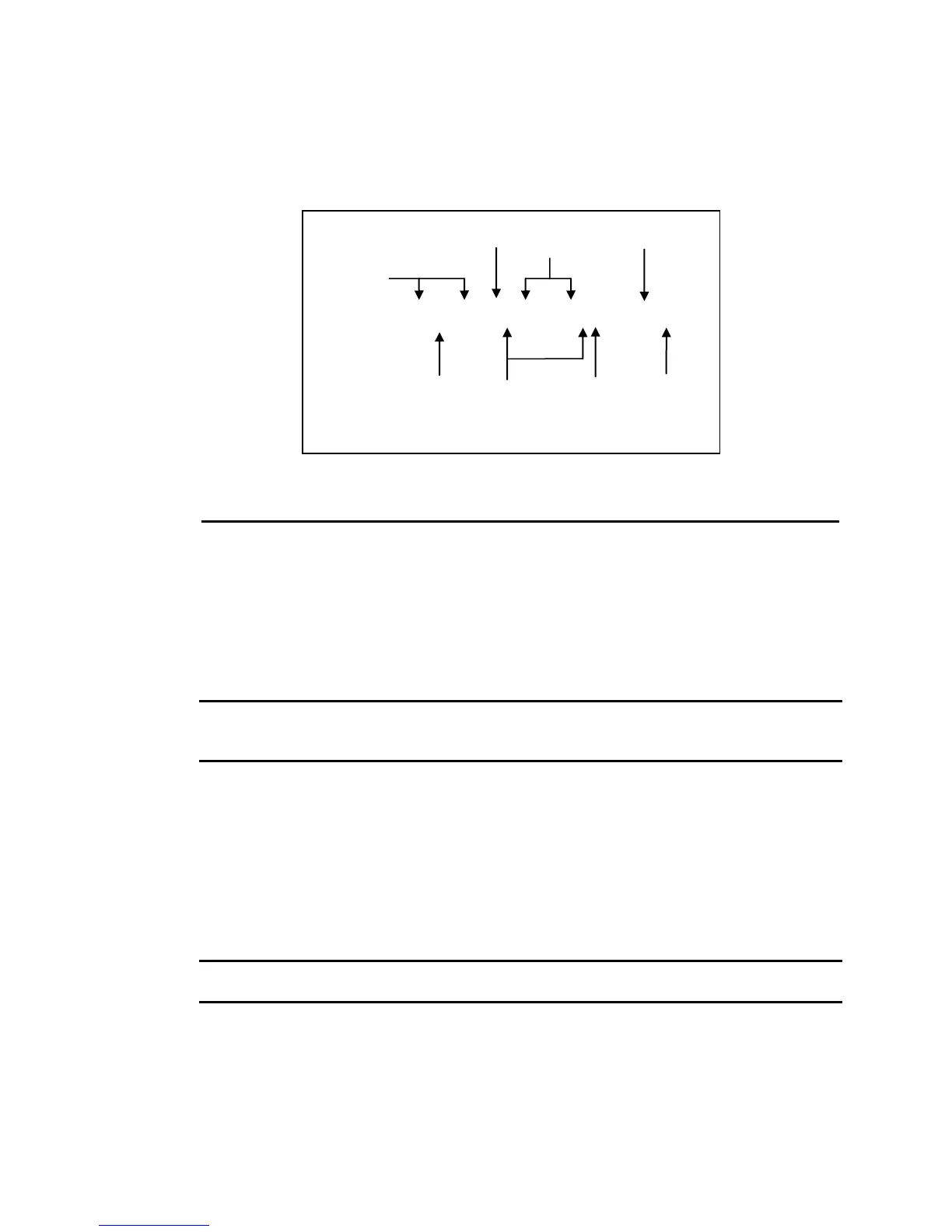Combining Message Units
The following command message is briefly described here, with details in subsequent
paragraphs.
Data Query Indicator
Message Unit
Header
SOUR:VOLT 80; FREQ 60; :CURR? <NL>
Header Message Root Message
Separator Unit Specifier Terminator
Separator
Figure 9-2: Command Message Structure
The basic parts of the above message are:
Message Component Example
Headers SOUR VOLT FREQ CURR
Header Separator The colon in SOUR:VOLT
Data 80 60
Data Separator The space in VOLT 80 and FREQ 60
Message Units VOLT 80 FREQ 60 CURR?
Message Unit Separator The semicolons in VOLT 80; and FREQ 60;
Root Specifier The colon in :CURR?
Query Indicator The question mark in CURR?
Message Terminator The <NL> (newline) indicator. Terminators are not part of
the SCPI syntax
Note: The use of compound messages such as the one shown in Figure 12-2 is
not recommended as they typically exceed the available receive buffer
length of the RP Series interface.
Headers
Headers are instructions recognized by the AC source. Headers (which are sometimes
known as "keywords") may be either in the long form or the short form.
Long Form The header is completely spelled out, such as VOLTAGE, SYSTEM, and
OUTPUT.
Short Form The header has only the first three or four letters, such as VOLT, SYST, and
OUTP.
The SCPI interface is not sensitive to case. It will recognize any case mixture, such as
VOLTAGE, VOLTage or Voltage. Short form headers result in faster program execution.
Note: In view of the 45 character receive buffer size of the RP Series, the short
form is recommended under all circumstances.
